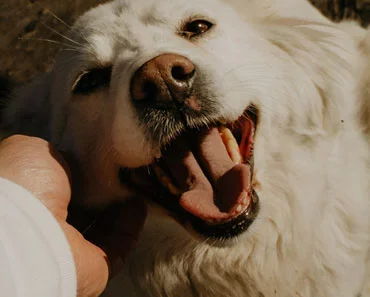
Are you a proud owner of a Golden Retriever? If so, you probably want to provide the best possible training for your furry friend. Crate training is one of the most effective methods to help your Golden Retriever learn boundaries and good behavior.
However, crate training can be a tricky process that requires patience and consistency. In this article, we will delve deeper into the topic of crate training your Golden Retriever and explore the best practices and common mistakes to avoid.
Whether you are a first-time pet owner or have experience with dogs, this article will provide valuable insights to help you crate train your Golden Retriever successfully.
Table of Contents
Why is crate training important for Golden Retrievers?
Provides a safe and secure space:
Golden Retrievers are known for their friendly nature, but they can also be anxious or fearful at times. Providing a crate as their own safe and secure space can help alleviate anxiety and give them a place to retreat when feeling overwhelmed.
Helps with house training:
One of the most significant benefits of crate training is that it helps with house training. Dogs instinctively avoid soiling their sleeping area, so when they are confined to a crate, they are less likely to have accidents indoors.
Prevents destructive behavior:
Golden Retrievers are active and energetic dogs that require plenty of exercises and mental stimulation. When they have left alone and bored, they may resort to destructive behavior such as chewing furniture, digging holes, or tearing up carpets. Crate training can prevent this behavior by providing a safe and appropriate outlet for their energy.
Eases separation anxiety:
Separation anxiety is a common problem among dogs, and Golden Retrievers are no exception. Crate training can help ease separation anxiety by providing a sense of security and a routine for the dog.
How to prepare the crate environment for your golden retriever?
Preparing the cage surroundings is a crucial stage that shouldn’t be skipped when crate training your golden retriever. Here are some tips to help you create a comfortable and safe space for your furry friend:
- Choose a suitable location: Select a spot that is quiet and free from distractions, where your dog can relax and feel secure.
- Add bedding: Use a comfortable and washable bed or blanket to line the crate. This will provide your dog with a cozy and inviting sleeping area.
- Keep it clean: Regularly clean and disinfect the crate to prevent odors and maintain a healthy environment for your pet.
- Provide water and toys: Always make sure your dog has access to fresh water while in the crate, and provide some toys to keep them entertained and mentally stimulated.
How to Introduce Your Golden Retriever to the Crate
Introducing your golden retriever to the crate can be a sensitive process, but it doesn’t have to be stressful. Here are some tips for a smooth introduction:
- Start Slow: Begin by simply letting your golden retriever explore the crate while leaving the door open. Place treats and toys inside to encourage them to enter voluntarily.
- Positive Reinforcement: Praise your golden retriever whenever they enter the crate on its own. Offer treats and toys as rewards for good behavior.
- Short Periods: Initially, only close the crate door for a few minutes at a time, gradually increasing the duration as your golden retriever becomes more comfortable.
- Comfortable Environment: Ensure the crate is comfortable and cozy for your golden retriever. Use a soft blanket or bed and place the crate in a quiet, low-traffic area.
- Consistency: Be consistent with your training, using the same commands and positive reinforcement techniques each time.
What are the best practices for crate training sessions with golden retrievers?
Now that you have introduced your golden retriever to the crate and they are comfortable spending time in it, it’s time to start the training sessions. Here are some best practices to keep in mind:
Consistency is key Golden retriever crate training:
It’s important to establish a routine for your training sessions and stick to it as much as possible. This means setting specific times of day for training and keeping them consistent.
Start with short sessions:
Begin with short training sessions, gradually increasing the time as your dog becomes more comfortable. Start with just a few minutes and gradually work up to longer periods.
Use positive reinforcement:
Always use positive reinforcement when training your dog. Reward them for good behavior, such as entering the crate voluntarily or lying down calmly inside. Never use physical punishment or force your dog into the crate.
Ignore whining:
It’s common for dogs to whine or bark when they are first getting used to the crate. However, it’s important to ignore this behavior and not give in to your dog’s demands. Giving attention or treats when your dog is whining will only reinforce the behavior.
Keep it comfortable:
Make sure the crate is comfortable for your dog. Provide soft bedding, toys, and treats to keep them occupied during training sessions. You want your dog to associate the crate with positive experiences.
Stay nearby:
During training sessions, stay nearby so your dog knows you are there for support. You can sit nearby or leave the door open so your dog can see you.
Gradually increase distance and time:
Once your dog is comfortable spending time in the crate with you nearby, start gradually increasing the distance between you and the crate. You can also gradually increase the length of time your dog spends in the crate.
What are the common mistakes to avoid during Golden retriever crate training?
There are a few typical blunders that you should strive to avoid when crate training your golden retriever. Here are a few examples:
Using the crate as a punishment:
If you use the crate as a form of punishment, your dog will associate it with negative experiences and may become fearful or anxious about going inside.
Leaving your dog in the crate for too long:
It’s important to gradually increase the amount of time your dog spends in the crate, but never leave them in there for extended periods. This can lead to boredom, discomfort, and even health issues.
Not making the crate comfortable:
A crate should be a comfortable and inviting space for your dog. Make sure to include soft bedding and toys to make the space more appealing.
Rushing the training process:
Crate training takes time and patience. Don’t rush the process or expect your dog to immediately love the crate. Gradually increase the amount of time they spend in the crate and use positive reinforcement to encourage good behavior.
Using the crate as a substitute for exercise and attention:
Your golden retriever still needs regular exercise and attention, even when they are spending time in their crate. Using the crate as a substitute for these things can lead to behavioral issues and make the training process more difficult.
How to use positive reinforcement to encourage good crate behavior?
Positive reinforcement is an effective way to encourage good behavior in your golden retriever when crate training. One of the most important things to remember is to use rewards that your dog finds motivating. This could be anything from their favorite treat to a special toy or a game of fetch.
During the crate training sessions, start by placing some treats or toys in the crate to encourage your dog to enter it. When your dog enters the crate, use a command such as “crate” or “kennel” and reward them with a treat or praise. Repeat this process several times until your dog becomes comfortable going in and out of the crate.
Next, you can start closing the door of the crate for short periods, gradually increasing the duration as your dog becomes more comfortable. Whenever you open the door, be sure to reward your dog with a treat or praise.
It’s important to note that you should never use the crate as a form of punishment. Your dog should associate the crate with positive experiences and feelings of comfort and safety.
If your dog is exhibiting undesirable behavior, try redirecting their attention to a toy or treat rather than scolding them or putting them in the crate as punishment.
How to gradually transition your golden retriever out of the crate?
Gradually transitioning your golden retriever out of the crate is an important step to ensuring their comfort and safety. Once your golden retriever has become accustomed to spending time in the crate, it’s important to slowly increase the amount of time they spend outside of it.
One way to do this is by gradually increasing the amount of time your dog spends outside of the crate while still keeping them in the same room. This allows your dog to become familiar with their surroundings and feel more comfortable being outside of the crate.
Another way to transition your dog out of the crate is by gradually increasing the amount of time they spend in a larger, enclosed space such as a playpen or gated area. This can be done while still keeping the crate nearby, allowing your dog to retreat to it if they become anxious or overwhelmed.
It’s important to keep in mind that each dog is different and may require a different transition period. Some dogs may need a few days while others may need several weeks or even months to become comfortable being outside of the crate for longer periods.
During this transition period, it’s important to continue using positive reinforcement to encourage good behavior and reinforce the idea that being outside of the crate is a positive experience. It’s also important to gradually increase the amount of freedom your dog has and to supervise them closely during this time.
Conclusion
In conclusion, crate training your golden retriever can be a valuable tool for both you and your furry friend. It can provide a safe and comfortable space for your dog to rest, relax, and feel secure. However, it is essential to approach crate training with patience, consistency, and positivity.
By following the best practices outlined in this article, such as gradually introducing your dog to the crate, using positive reinforcement, and avoiding common mistakes, you can ensure a successful and stress-free crate training experience for both you and your beloved golden retriever.
So why not give it a try and see the positive results for yourself?






